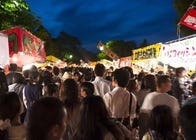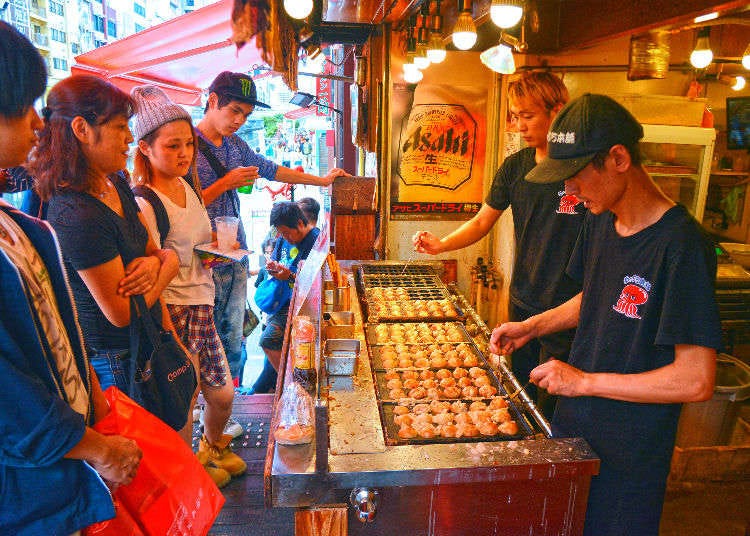
Japan is a country filled with delicious eats and Japanese street food is especially appetizing - especially in summer!
Yattai are small food stalls that can be found along Japanese streets and at festivals and you don’t want to miss out on the food they offer! These vendors offer an accessible and tasty selection of on-the-go dishes that are cheap, yet high-quality and delicious.
Just be careful not to get carried away by the incredible variety. Here are 12 Japanese street foods you'll want to try when visiting Japan!
What are Yatai food stalls?
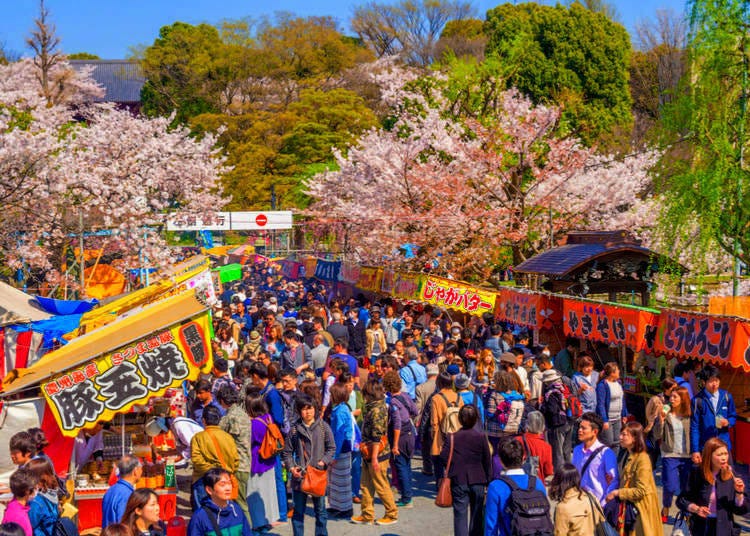
Unlike places such as Singapore and Bangkok, Japan does not have much in the way of everyday street food culture, the Dōtonbori area of Osaka and Fukuoka being two main exceptions. This may be because it is generally frowned upon to eat while walking. And there still is not much in the way of food truck culture, although that is changing.
But during the summer, during “matsuri” (festival) season, there is something close: Yatai, open-air stalls or booths selling a wide assortment of easy-to-prepare and eat foods to crowds of festival goers.
Yatai have a long history in Japan, there having been certain neighborhoods in Edo with semi-permanent yatai serving up the then-new foods sushi and tempura.
Many of the early soba shops were simple wooden structures carried on the shoulders of the proprietor. The 20th century saw the rise of two or four-wheeled carts that were pulled out to a park or someplace with a lot of foot traffic where customers would eat oden or noodles and sip sake.
These mostly disappeared before the 1964 Tokyo Olympics, although a few can still be found. Most of the yatai today consist of a table or two set up under a canopy with no walls, the smoke and aromas of foods cooking, and the cries of the operators hawking their products adding much to the festive atmosphere.
These days yatai can mostly be found around large festival-like events at temples or shrines or at smaller neighborhood fests, most of which happen to take place in the summer or early fall.
There are also street fairs in December, before New Year's, where you can find more wintery dishes to eat; warm sake instead of cold, oden (a kind of hot pot) or yaki-imo (roasted sweet potato) instead of kakigo-ori shaved ice.
There are almost always at least a few yatai next to Sensōji Temple in Asakusa, with many more on weekends when there is some sort of monthly festival or market. A few can be found in Ueno Park, especially on weekends. Summertime displays of fireworks always attract a lot as well.
Two of the best places to experience yatai dining are the 'Bird Market' held on days of the rooster in November at Otori Jinja near Asakusa and the bettara market in Nihonbashi every year on October 19 and 20.
What sorts of things can you eat at a festival in Japan? Let’s take a quick look at some of the more common and popular things, foods that, in some cases, can rarely be found elsewhere.
Essential Japanese street foods at yatai
1. Takoyaki
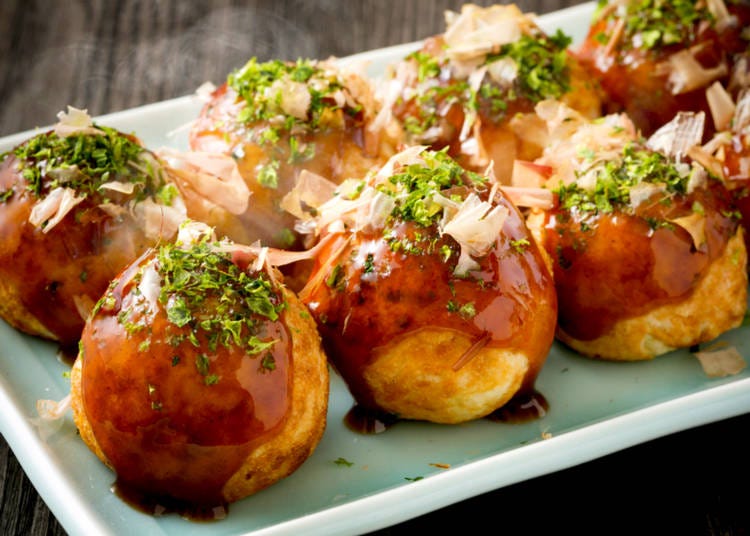
One of the most popular yatai foods is Takoyaki. Takoyaki consist of batter (wheat flour, water and eggs) with bits of octopus (the tako!) and more that are fried into bite-size balls in special takoyaki pans, then served topped with a sweet, dark takoyaki sauce, a sprinkling of aonori seaweed and some katsuobushi (bonito) flakes that seem to dance from the heat.
They were first made in 1935 in Osaka, where many still consider them the city’s signature food. Takoyaki are usually served in a small paper dish shaped like a row boat and are eaten with a toothpick or small skewer. They are extremely hot when served, so it’s best to open a few up to let them cool off before popping them into your mouth.
2. Yakisoba
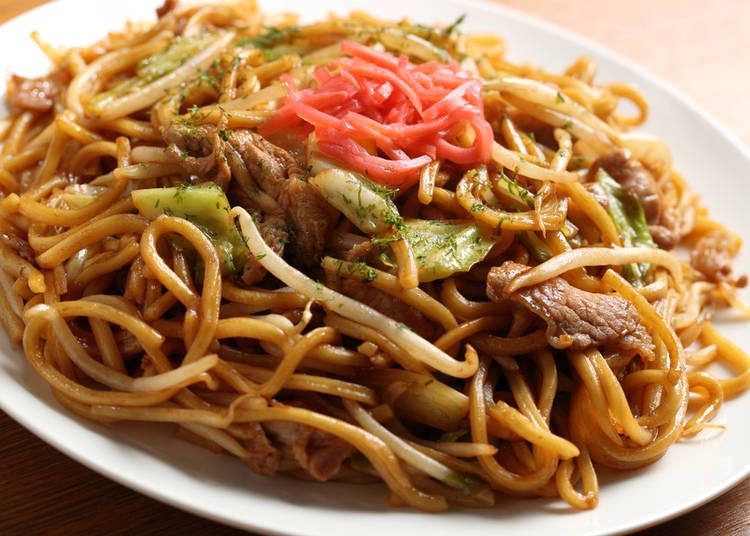
Another festival favorite food is yakisoba. Meat, almost always pork, is grilled on a steel griddle, then chopped cabbage, onions, and yakisoba noodles are added, along with some water or sauce. Despite the name, the noodles are made of wheat, not soba (buckwheat). Pretty much every prefecture has its own version, so don’t expect always to find the same style as you travel around.
3. Okonomiyaki
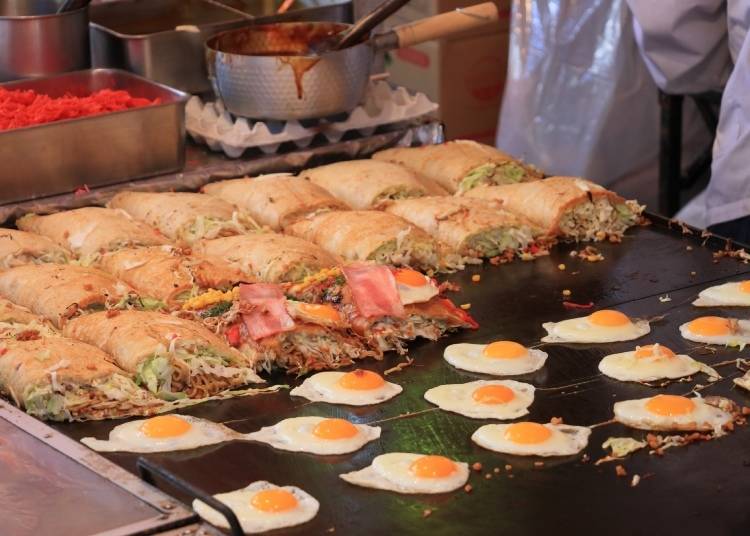
Another filling food you can find at street fests is okonomiyaki, a type of savory pancake made of flour, egg, and water, with all kinds of other ingredients added.
“Okonomi” means “as you like it,” which is a good term for what ingredients might be included, although shrimp, octopus or squid, as well as beef and pork, are among the favorites.
As a street food, okonomiyaki is cooked on a steel griddle, then topped with sweet and thick okonomiyaki sauce, Japanese mayonnaise, and katsuobushi shavings that appear to dance from the heat of the pancake.
There are two basic versions, one from Osaka, the other from Hiroshima.
4. Yakitori and other grilled meats
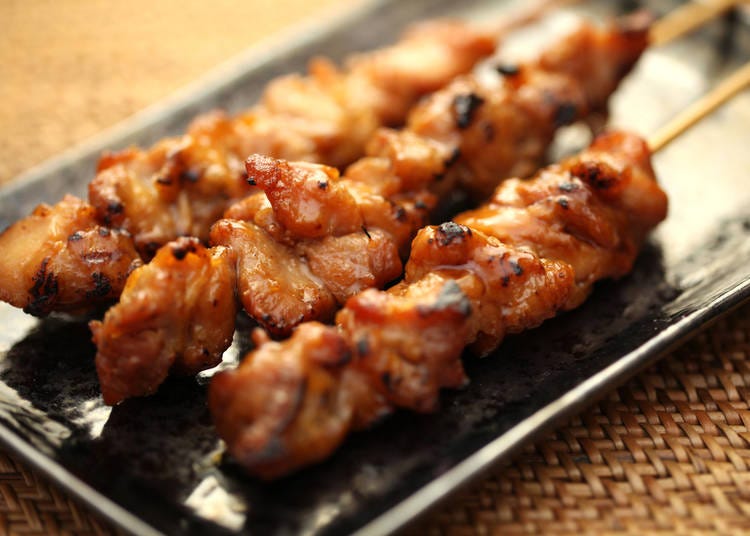
While Takoyaki and yakisoba might be very Japanese foods and perhaps unfamiliar to some people, one category that probably everyone would recognize is grilled meats, often done in Japanese style.
Among the most popular are yakitori, pieces of grilled chicken (tori) grilled (yaki) on skewers and served with either tare (tar-eh), a shōyu-based sauce that can sometimes be semi-sweet, or shio (salt). The most common choices are negi-ma (with negi onions), kawa (skin), re-ba (liver), and tsukune (minced).
There is also yaki-ton (grilled pork) as well as various cuts of beef and sometimes even shika (venison, or deer meat) served on skewers. You may even find a stand serving doner kebab meats, kebab here referring to the vertical skewer the meat rotates on as it cooks rather than the small wooden skewers yakitori and the like come on.
Another chicken dish is kara-age, fried chicken consisting of pieces of marinated chicken that have been coated in flour and deep fried, crispy on the outside and juicy on the inside.
“Hotdogs” can also be had, but if you are expecting an American-style hotdog, a wiener in a bun, you will likely be disappointed; in Japan, a hotdog will usually be served on a stick already artistically dressed with catsup and mustard and without a bun.
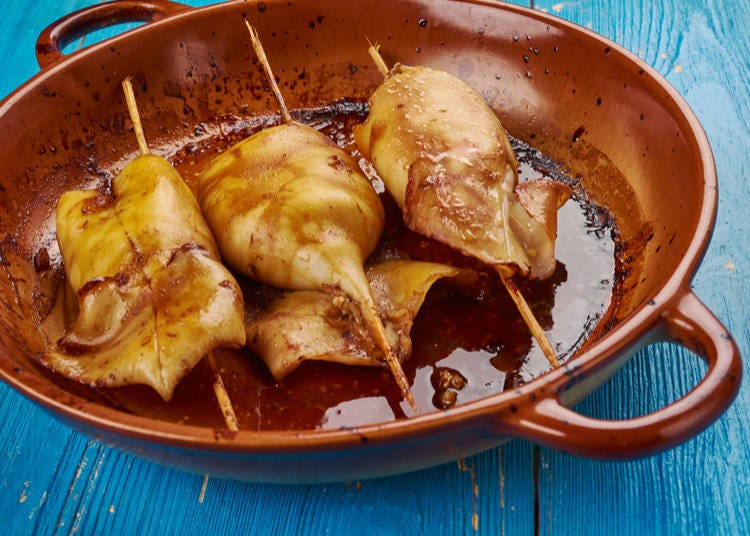
Japan being an island nation, it should come as a surprise that many edibles from the sea are popular yatai fare. One of the most famous is ayu no shioyaki, a whole ayu (sweetfish), skewered and smothered in salt and cooked next to an open fire. If this isn’t for you, look for another stand serving BBQ scallops (hotate), squid (ika), hamaguri clams, and more.
5. Vegetables
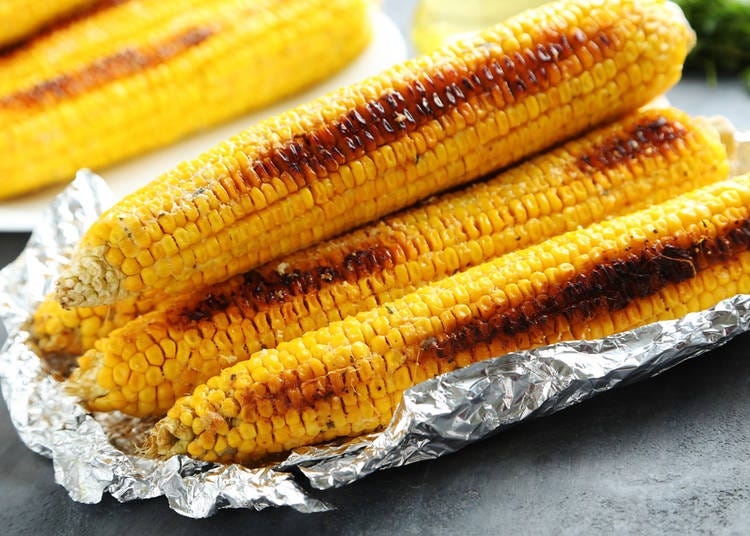
Tōmorokoshi (corn on the cob) and potatoes (imo) are the most popular vegetables found where yatai are gathered. In Japan, corn on the cob is served dipped in shōyu (soy sauce) and sprinkled with salt.
It has been done this way for some 250 years, the only difference between then and now is that the corn these days is much sweeter.
Potatoes can be found prepared in numerous ways, including jaga-bata (basically, a baked potato swimming in butter), fried, either furi furi (chewy) French fry style or in long pieces curling around a skewer, and in the winter, yaki-imo (baked sweet potato).
At spring and summer fests, you may be able to try yaki takenoko, pieces of bamboo shoot grilled over charcoal and dipped in a shōyu based tare sauce, a treat available only when the bamboo shoots are coming up.
6. Candied fruit
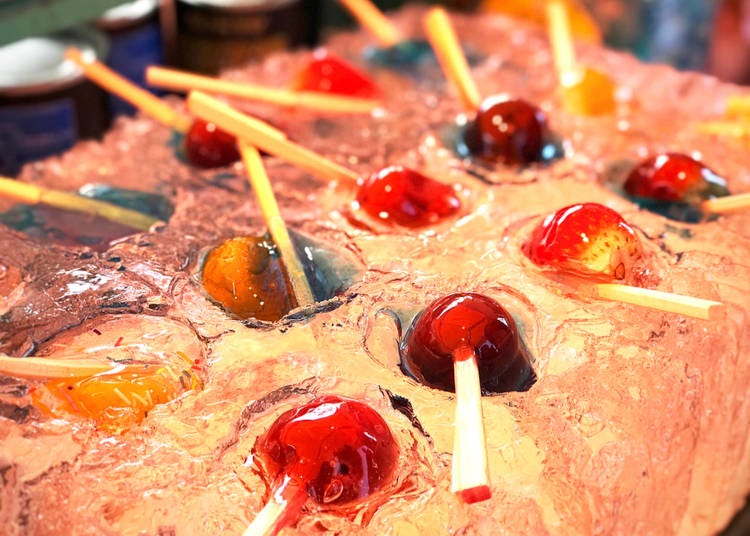
A street classic everywhere, candied fruit can be found across Japan and in many variations. From anzu ame (candied apricot) to ringo ame (candied apples), these various fruits dipped in candy syrup will leave you wanting more. You should especially try ichigo ame (candied strawberries) at the height of strawberry season for a true Japanese treat or, if you can find it, the rarer mikan ame - a mandarin native to Japan.
7. Wata-ame
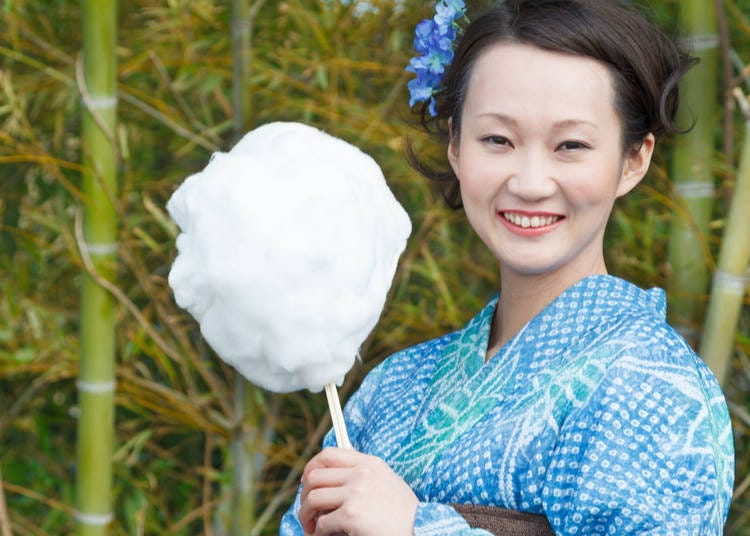
If you are looking for something familiar to quench your sweet tooth, look for some cotton candy, a staple of carnivals and fairs the world over.
The only difference between cotton candy in Japan and outside Japan is the name: it is known as either wata-ame (wata ah may) or watagashi in Japan (wata means cotton, ame is the word for candy, and kashi or gashi refers to sweets in general).
8. Choco bananas

Another international dessert is Choco Bananas, a treat that likely originated in Central America, a region famous for banana production and where chocolate originated.
It is a simple and easy-to-make treat: just freeze a banana and then dip it in melted chocolate, then decorate with colorful sprinkles. It is also a healthy thing to eat while at a hot summer fest as bananas are relatively rich in potassium, a necessary mineral when people sweat in the heat of Japan’s summers.
9. Crepes
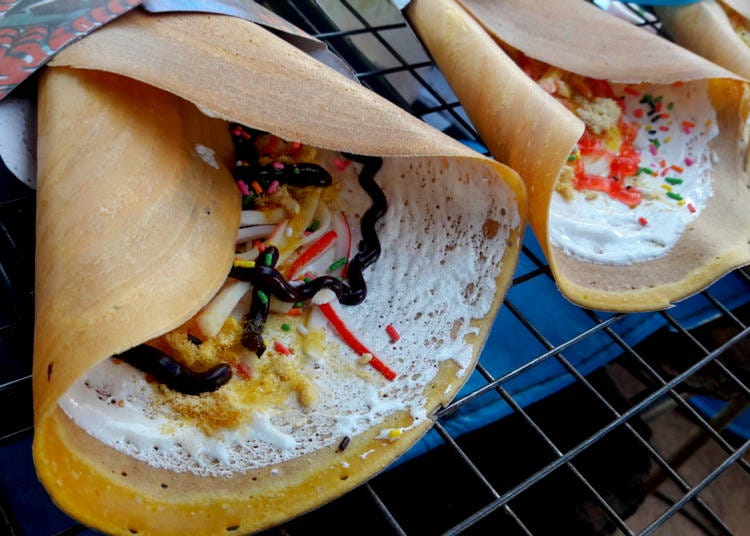
While sweet crepes may be more often associated with the many crepe shops of Tokyo’s Harajuku neighborhood, they are also popular at street festivals.
The crepes you find at fairs are simply thin pancakes made of wheat flour folded into a cone and then stuffed with sweets, including chocolate, fruit, custard, you name it.
Appearance is important, with bright-colored ingredients being essential. They are served wrapped in paper to keep your hands clean.
10. Minature cakes
There are three types of miniature cakes that are popular at festivals and worth trying, baby kasutera, ningyōyaki, and imagawayaki.
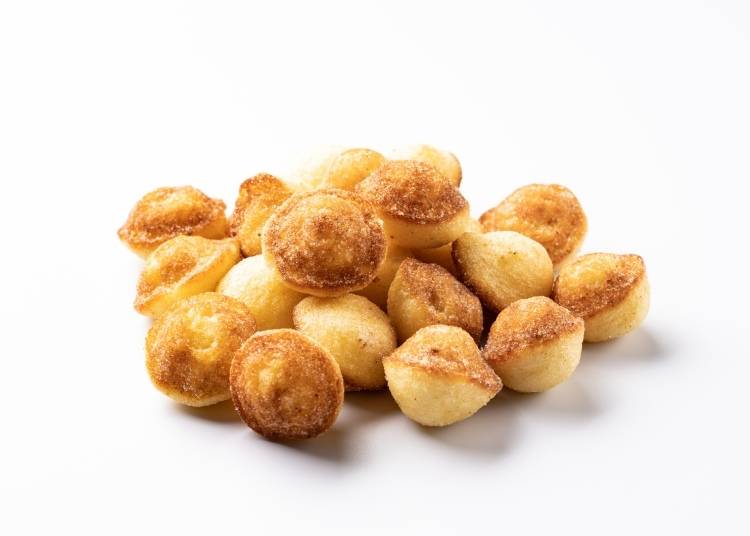
Baby kasutera are miniature kasutera cakes. They are made of flour, eggs, and sugar and steamed. Kasutera were introduced to Japan in the 16th century by the Portuguese and turned into a uniquely Japanese version that uses steam cooking rather than ovens, which Japan did not have at the time. Kasutera is probably a bit sweeter and richer than ningyōyaki.
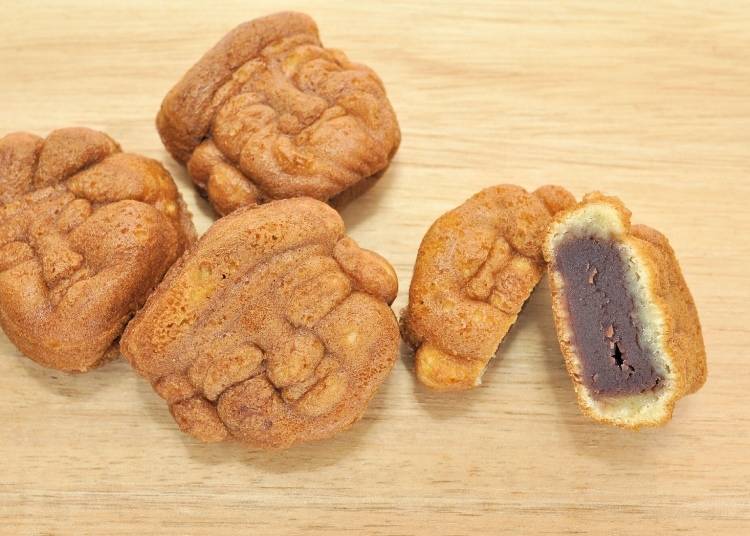
Ningyōyaki are bite-sized cakes made by filling a cast iron mold with a batter of eggs, flour, and water, then adding some an (sweet bean paste) and another dollop of batter, then cooking it over a fire for five minutes or so. The molds come in many variations, with the Seven Gods of Good Fortune being one of the most popular. The name comes from this very Japanese sweet first being made in the Ningyōchō neighborhood of Tokyo.
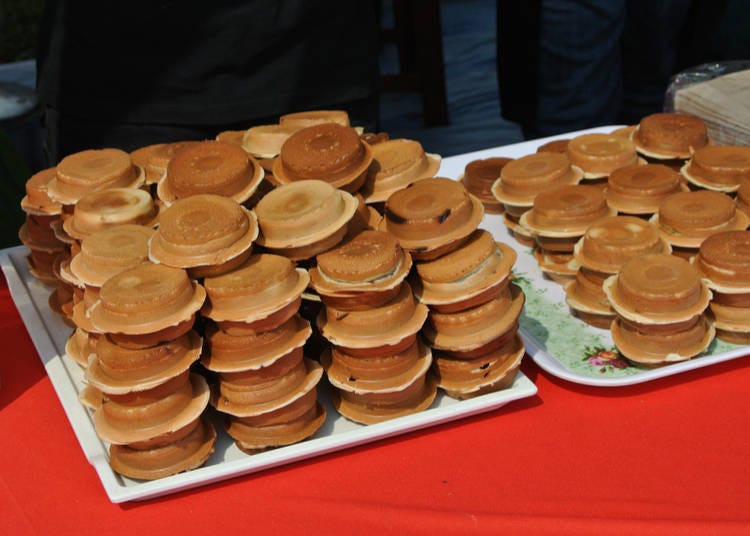
Imagawayaki is a sweet Japanese street food treat that is made from a batter of eggs, flour, sugar, and water that is ‘baked’ in disk-shaped molds. The end product is a golden, bite-sized sponge filled with either anko (red bean paste), chocolate, or custard. Named after an Edo-era bridge in Tokyo where they were first sold, imagawayaki is known as taiko-manju in the Kansai region.
11. Dango
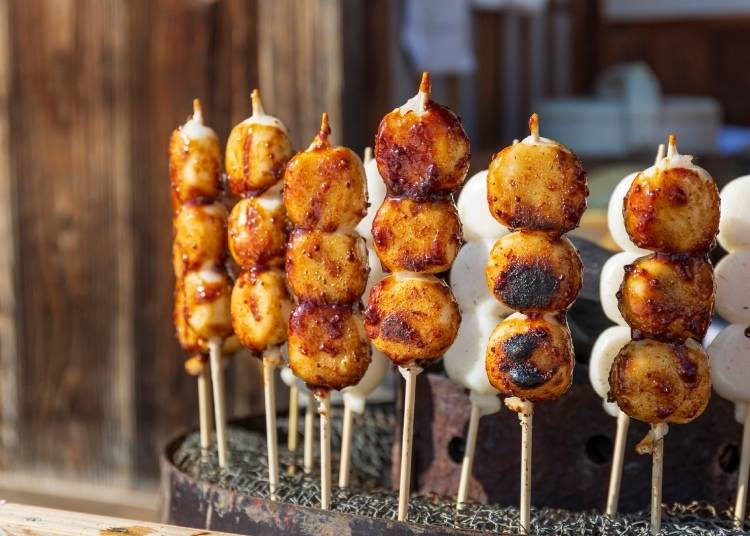
A standard item at all festivals as well as along shopping streets are dango, small balls of either mochi rice, millet, soba, or wheat that are cooked—either boiled or grilled—then smothered in something sweet and served on a skewer. They are the perfect treat to eat while standing. Some are served hot, slightly roasted over a fire, and then dipped in a sweet sauce, while others are served cold, usually sprinkled with kinako (soybean flour).
12. Amezaiku
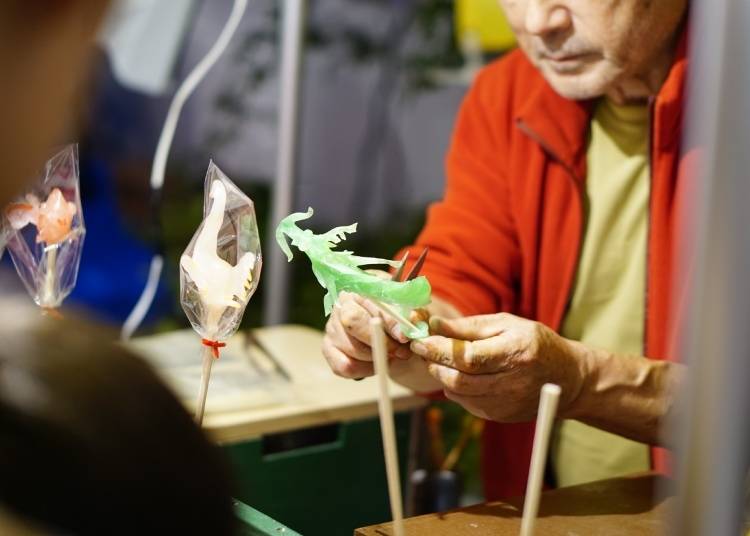
Amezaiku is a type of hard candy formed in the shape of various animals, anime or manga characters, flowers, and the like.
It is made by dipping a small stick in a vat of heated syrup, then adding some food coloring and rolling it into a small blob, then—as the material cools and hardens—shaping it into whatever form is desired, using only a pair of small scissors. A bit more dye is added at the end to finish the piece.
Amezaiku, made from starch, not sugar, have been around since the Heian period when they were made as offerings for temples. In my opinion, watching these miniature pieces of edible art being made is more fun than actually eating the candy.
Summertime treats - Street foods often found at festivals
There are some festival foods that are better suited for summertime festivals than for cold, winter fests. Here is a quick look at a couple examples of both.
13. Kakigori
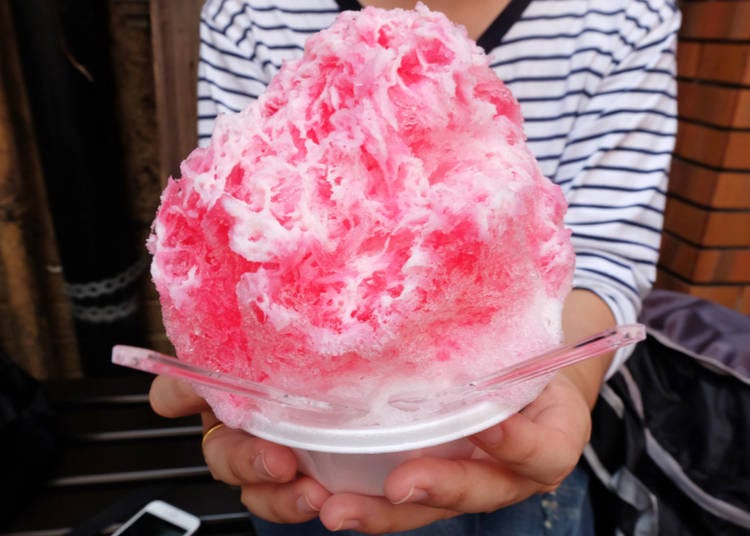
Kakigori is a Japanese version of western snow cones or shaved ice. A very simple version was eaten by the court nobles during the Heian era some one thousand years ago.
What makes kakigori “Japanese” are the various flavored syrups that are poured over the ice as well as additional toppings.
The most popular fruit flavors include ichigo (strawberry), melon (green), mango (orange), lemon, orange. Other flavors include Blue Hawaii, cola, and macha tea. There are regional flavors as well, including pineapple and mikan in Kyushu. Many people top off their bowls of shaved ice with an (sweet beans), a shot of Calpis (a milky drink made by lactic acid fermentation), and even condensed milk.
If you attend a summertime festival in Japan, you can expect to see lots of fresh, seasonal fruit for sale, all cut into bite-size pieces, and in the case of pineapple and strawberries (ichigo), served on skewers. There will also be watermelon (suika), sold in slices cut from a Japanese round watermelon.
Winter street foods in Japan
While the vast majority of festivals in Japan take place in the warmer months, there are still a few that happen in the winter. Naturally, the fare found at winter fests is different from what there is in the summer.
Part of this is due to certain foods not being available in the winter, for instance fresh corn or watermelon. Also, people don’t want to eat cold things like kakigori. Instead, more hot foods will be available, including oden or simmered daikon. And lots of warm sake instead of cold beer to drink!
14. Yaki-imo
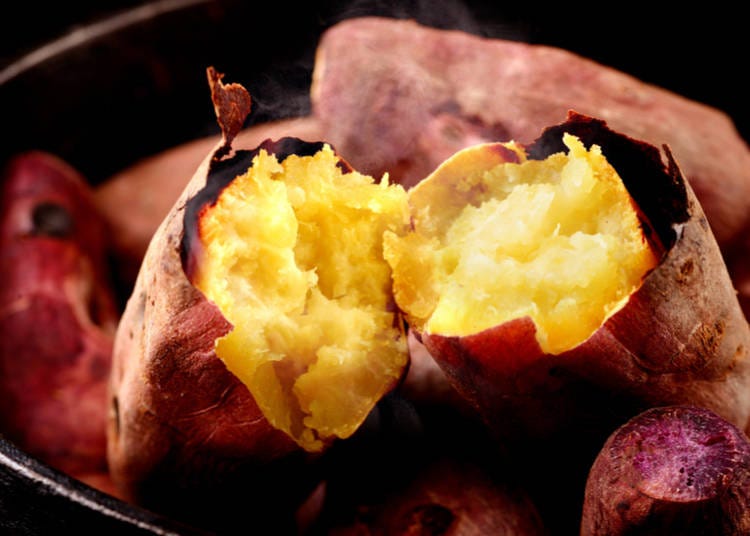
Yaki-imo are baked satsuma imo, a type of sweet potato originally from South America that was first brought to Miyakojima (one of the southern-most islands of the Ryukyu Islands, now part of Okinawa) via the Philippines by the Portuguese in 1597 before soon spreading throughout Kyushu, Satsuma being the former name of modern-day Kagoshima.
Served wrapped in paper, hot satsuma imo are eaten by hand. Be careful, though, as they are at first quite hot. Most satsumaimo have yellow flesh inside, although there is also a purple variety. Either way, they are naturally quite sweet and don’t require any additional topping.
In the winter month, it is common to see—and hear—small trucks with a wood-fired oven in the back driving slowly with music blaring while a voice calls out “satsumaimo, ishiyaki satsumaimo,” ishiyaki referring to their being cooked on hot stones.
During and after WWII, a time of near famine in Japan, satsumaimo was often the only food available; it has since been credited with preventing mass starvation in the country.
If you spot someone selling freshly cooked yaki-imo at a winter festival, give it a try; it makes a lovely warm and healthy snack. Or stop a passing yaki-imo truck or pick one up at the many supermarkets that keep them warming all day long.
15. Hot Sake
Until fairly recently, most people who had never visited Japan probably had only tried warm or hot sake, if they had tried it at all.
In Japan, most sake, which is normally called nihonshu, is served cold. But warm sake is also common, especially in the colder months. The generic term for warm sake is atsukan.
There are different terms for warm sake, depending on the temperature it is served at. Atsukan is served at 50°C, while sake warmed to 40°C is called nurukan (cold sake is generally referred to as reishu, pronounced as ray-shoe). There are other terms as well for other temperatures every five degrees cooler below 55°C (tobikirikan), the maximum temperature before the flavor starts to break down.
If you happen to see a few large bottles being heated in a pot of warm water, it is most likely sake being heated.
So if you are old enough (20 years in Japan) and feel like sipping something to warm you, try a small cup of hot sake the way it is meant to be served!
The things described above are just a taste of the many, many edibles that can be found at Japanese street fairs and festivals. Hopefully, this will be a good introduction of what you might find if—or when!—you have the opportunity to experience a festival.
So go out and enjoy not just the flavors of a festival but also the wonderful aromas and the sounds of vendors touting their wares and of other festival goers having fun. Bon appetit!
- Yaki = Grilled
- Kushi = A skewer
- Shio = Salt
- Yatai = A temporary shop or street stall
- Tare (ta-ray) = A shōyu-based sauce used as, among other things, a topping for grilled meats, especially yakitori
- Reishu (ray-shoe) = Cold sake
- Atsukan = Hot sake
Make your visit special with a food tour
If you're a foodie looking to explore the culinary delights of Japan, joining a small food tour group can be a fantastic way to experience the best cuisine. These tours offer the chance to sample local specialties, learn about Japanese food culture, and discover hidden gems with expert guides.
-
 (Tokyo) Japanese Food & Drink Tour with a Snack Evangelist in Shinbashi
(Tokyo) Japanese Food & Drink Tour with a Snack Evangelist in Shinbashi
Image: Klook -
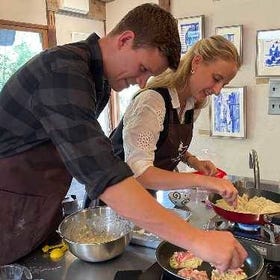 (Tokyo) Japanese Food Cooking Private Workshop in Yanaka
(Tokyo) Japanese Food Cooking Private Workshop in Yanaka
Image: Viator -
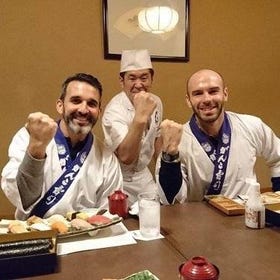 (Tokyo) Tsukiji Fish Market Visit with Sushi Making Experience
(Tokyo) Tsukiji Fish Market Visit with Sushi Making Experience
Image: Viator -
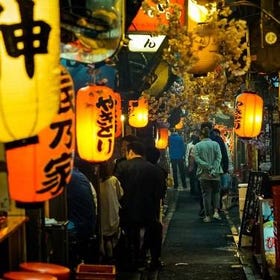 (Tokyo) Bar Hopping Night Tour in Shinjuku
(Tokyo) Bar Hopping Night Tour in Shinjuku
Image: Klook -
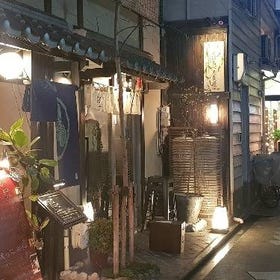 (Kyoto) Old Kyoto Nighttime All-Inclusive Local Food Tour
(Kyoto) Old Kyoto Nighttime All-Inclusive Local Food Tour
Image: Klook -
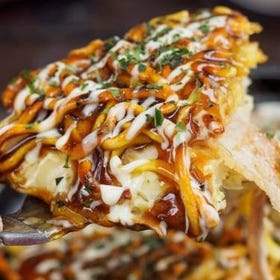 (Osaka) Okonomiyaki Tasting Private Half Day Tour
(Osaka) Okonomiyaki Tasting Private Half Day Tour
Image: Klook
Written by:

*Prices and options mentioned are subject to change.
*Unless stated otherwise, all prices include tax.
Limited time offer: 10% discount coupons available now!
Recommended places for you
-
Appealing
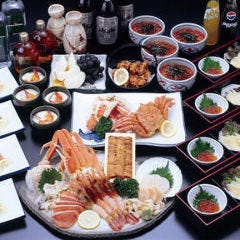
Rukku and Uohei
Izakaya
Sapporo / Chitose
-
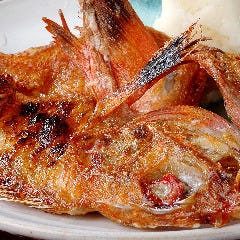
Jiraiya
Other Japanese Food
Sendai And Matsushima
-

Momotaro Uenoten
Other Japanese Food
Ueno
-

UDONNISHIMURA
Other Japanese Food
Shinsekai, Tennouji, Tsuruhashi
-
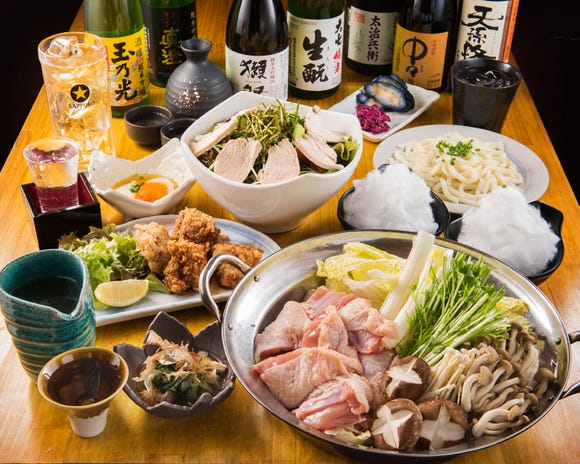
Wasui Yaesuten
Other Japanese Food
Tokyo Station
-

SUN Osakaten
Other Japanese Food
Umeda, Osaka Station, Kitashinchi
-

12 Unique & Fun Tokyo Food Tours to Enjoy in 2024
-

Step Into the Story: Inside Immersive Fort Tokyo
-

Discover Osaka Station City: A Journey Through Its Most Fascinating Spots
-

Where to Eat in Yokohama: 10 Must-Try Restaurants for Yakiniku, Izakayas, Unique Dining & More
-

The CASIO S100: How CASIO's Masterpiece Calculator Redefines Business Elegance With Japan-Made Reliability
-

15 Must-Try Restaurants in Ikebukuro: From Aged Yakiniku to All-You-Can-Eat Sushi, Plus Adorable Animal Cafés
-
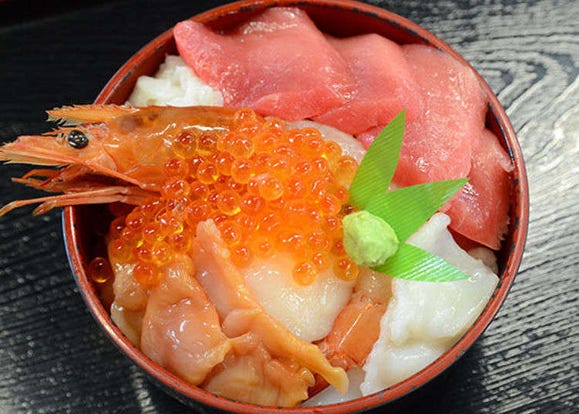
Seafood Bowls and More at the Shiogama Seafood Wholesale Market!
-
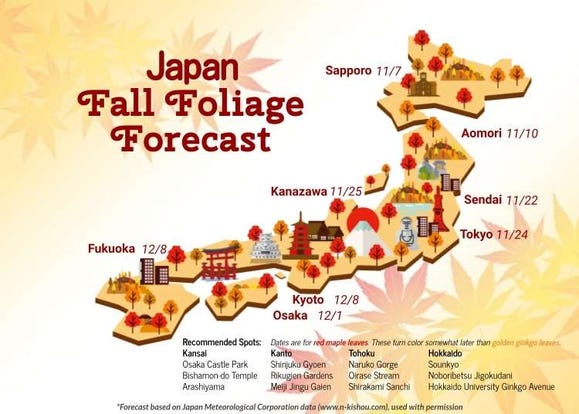
Autumn in Japan 2024: Fall Foliage Forecast & Where to Enjoy the Colorful Leaves (+Tour Info)
-
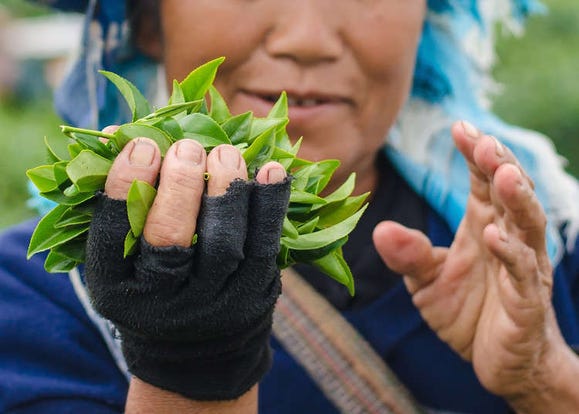
Matcha: How Powdered Green Tea is Produced
-

3 Best Hotels in Kobe, Japan with Amazing Views of Kobe Bay!
-
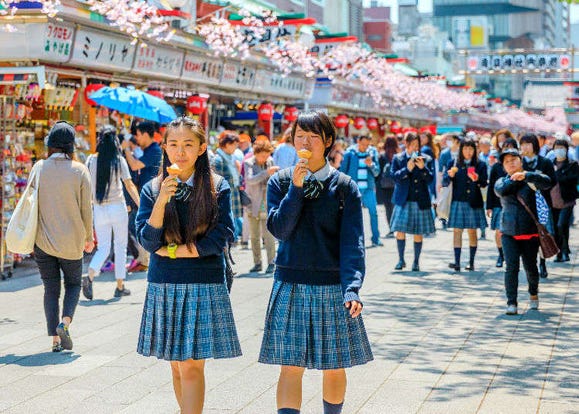
Meals, Manners & More: Your Ultimate Guide to Eating in Japan!
-
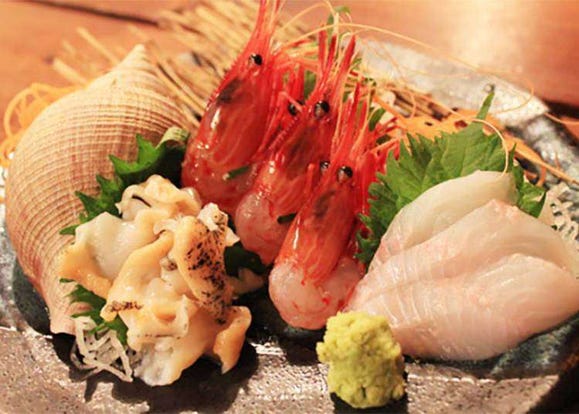
Top 6 Best Restaurants in Kutchan Hokkaido - Where to Eat According to Locals
- #best sushi japan
- #what to do in odaiba
- #what to bring to japan
- #new years in tokyo
- #best ramen japan
- #what to buy in ameyoko
- #japanese nail trends
- #things to do japan
- #onsen tattoo friendly tokyo
- #daiso
- #best coffee japan
- #best japanese soft drinks
- #best yakiniku japan
- #japanese fashion culture
- #japanese convenience store snacks















